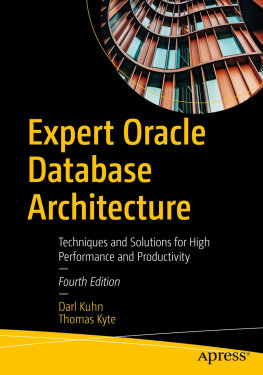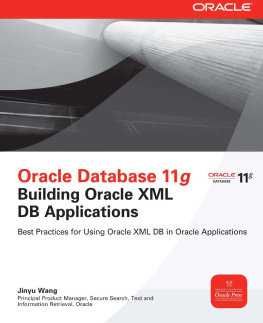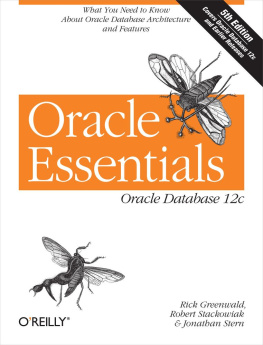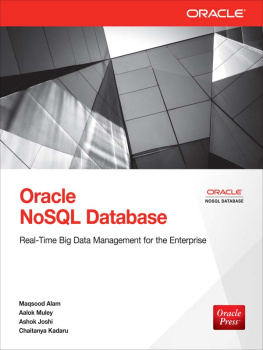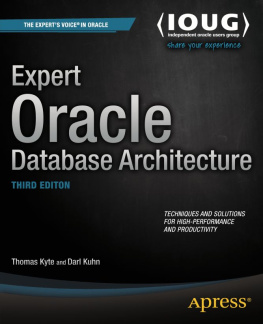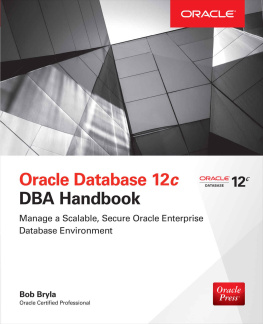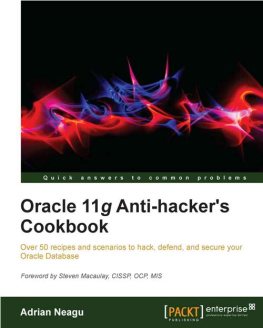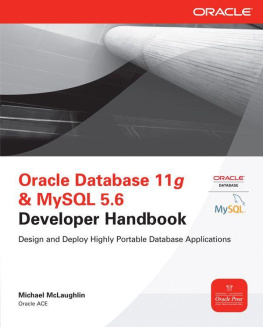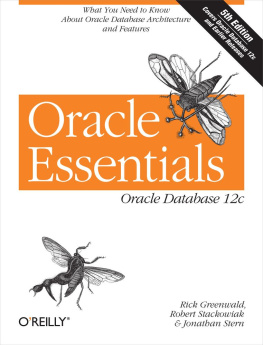Darl Kuhn - Expert Oracle Database Architecture
Here you can read online Darl Kuhn - Expert Oracle Database Architecture full text of the book (entire story) in english for free. Download pdf and epub, get meaning, cover and reviews about this ebook. year: 2022, publisher: Apress, genre: Computer. Description of the work, (preface) as well as reviews are available. Best literature library LitArk.com created for fans of good reading and offers a wide selection of genres:
Romance novel
Science fiction
Adventure
Detective
Science
History
Home and family
Prose
Art
Politics
Computer
Non-fiction
Religion
Business
Children
Humor
Choose a favorite category and find really read worthwhile books. Enjoy immersion in the world of imagination, feel the emotions of the characters or learn something new for yourself, make an fascinating discovery.
- Book:Expert Oracle Database Architecture
- Author:
- Publisher:Apress
- Genre:
- Year:2022
- Rating:4 / 5
- Favourites:Add to favourites
- Your mark:
- 80
- 1
- 2
- 3
- 4
- 5
Expert Oracle Database Architecture: summary, description and annotation
We offer to read an annotation, description, summary or preface (depends on what the author of the book "Expert Oracle Database Architecture" wrote himself). If you haven't found the necessary information about the book — write in the comments, we will try to find it.
Expert Oracle Database Architecture — read online for free the complete book (whole text) full work
Below is the text of the book, divided by pages. System saving the place of the last page read, allows you to conveniently read the book "Expert Oracle Database Architecture" online for free, without having to search again every time where you left off. Put a bookmark, and you can go to the page where you finished reading at any time.
Font size:
Interval:
Bookmark:
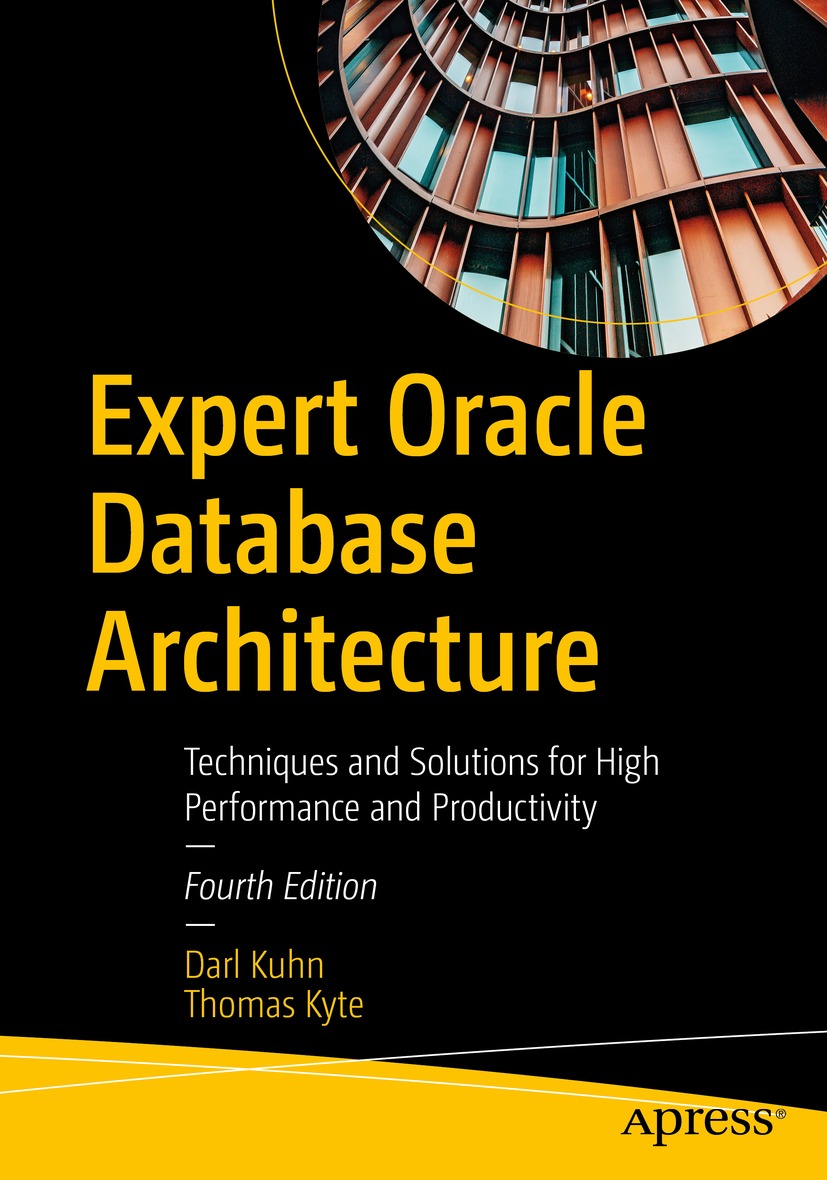

This Apress imprint is published by the registered company APress Media, LLC part of Springer Nature.
The registered company address is: 1 New York Plaza, New York, NY 10004, U.S.A.
The inspiration for the material contained in this book comes from my experiences developing Oracle software and from working with fellow Oracle developers and DBAs to help them build reliable and robust applications based on the Oracle database. The book is basically a reflection of what I do every day and of the issues I see people encountering each and every day.
I covered what I felt was most relevant, namely, the Oracle database and its architecture. I could have written a similarly titled book explaining how to develop an application using a specific language and architecturefor example, one using JavaServer Pages that speaks to Enterprise JavaBeans, which in turn uses JDBC to communicate with Oracle. However, at the end of the day, you really do need to understand the topics covered in this book in order to build such an application successfully. This book deals with what I believe needs to be universally known to develop successfully with Oracle, whether you are a Visual Basic programmer using ODBC, a Java programmer using EJBs and JDBC, or a Perl programmer using DBI Perl. This book does not promote any specific application architecture; it does not compare three-tier to client/server. Rather, it covers what the database can do and what you must understand about the way it works. Since the database is at the heart of any application architecture, the book should have a broad audience.
As the title suggests, Expert Oracle Database Architecture concentrates on the database architecture and how the database itself works. I cover the Oracle database architecture in depth: the files, memory structures, and processes that comprise an Oracle database and instance. I then move on to discuss important database topics such as locking, concurrency controls, how transactions work, and redo and undo, and why it is important for you to know about these things. Lastly, I examine the physical structures in the database such as tables, indexes, and datatypes, covering techniques for making optimal use of them.
One of the problems with having plenty of development options is that its sometimes hard to figure out which one might be the best choice for your particular needs. Everyone wants as much flexibility as possible (as many choices as they can possibly have), but they also want things to be very cut and driedin other words, easy. Oracle presents developers with almost unlimited choice. No one ever says, You cant do that in Oracle. Rather, they say, How many different ways would you like to do that in Oracle? I hope that this book will help you make the correct choice.
This book is aimed at those people who appreciate the choice but would also like some guidelines and practical implementation details on Oracle features and functions. For example, Oracle has a really neat feature called parallel execution. The Oracle documentation tells you how to use this feature and what it does. Oracle documentation does not, however, tell you when you should use this feature and, perhaps even more important, when you should not use this feature. It doesnt always tell you the implementation details of this feature, and if youre not aware of them, this can come back to haunt you (Im not referring to bugs, but the way the feature is supposed to work and what it was really designed to do).
In this book, I strove to not only describe how things work but also explain when and why you would consider using a particular feature or implementation. I feel it is important to understand not only the how behind things but also the when and why as well as the when not and why not!
The target audience for this book is anyone who develops applications with Oracle as the database back end. It is a book for professional Oracle developers who need to know how to get things done in the database. The practical nature of the book means that many sections should also be very interesting to the DBA. Most of the examples in the book use SQL*Plus to demonstrate the key features, so you wont find out how to develop a really cool GUIbut you will find out how the Oracle database works, what its key features can do, and when they should (and should not) be used.
This book is for anyone who wants to get more out of Oracle with less work. It is for anyone who wants to see new ways to use existing features. It is for anyone who wants to see how these features can be applied in the real world (not just examples of how to use the feature, but why the feature is relevant in the first place). Another category of people who would find this book of interest is technical managers in charge of the developers who work on Oracle projects. In some respects, it is just as important that they understand why knowing the database is crucial to success. This book can provide ammunition for managers who would like to get their personnel trained in the correct technologies or ensure that personnel already know what they need to know.
Knowledge of SQL: You dont have to be the best SQL coder ever, but a good working knowledge will help.
An understanding of PL/SQL: This isnt a prerequisite, but it will help you to absorb the examples. This book will not, for example, teach you how to program a FOR loop or declare a record type; the Oracle documentation and numerous books cover this well. However, thats not to say that you wont learn a lot about PL/SQL by reading this book. You will. Youll become very intimate with many features of PL/SQL, youll see new ways to do things, and youll become aware of packages/features that perhaps you didnt know existed.
Font size:
Interval:
Bookmark:
Similar books «Expert Oracle Database Architecture»
Look at similar books to Expert Oracle Database Architecture. We have selected literature similar in name and meaning in the hope of providing readers with more options to find new, interesting, not yet read works.
Discussion, reviews of the book Expert Oracle Database Architecture and just readers' own opinions. Leave your comments, write what you think about the work, its meaning or the main characters. Specify what exactly you liked and what you didn't like, and why you think so.

